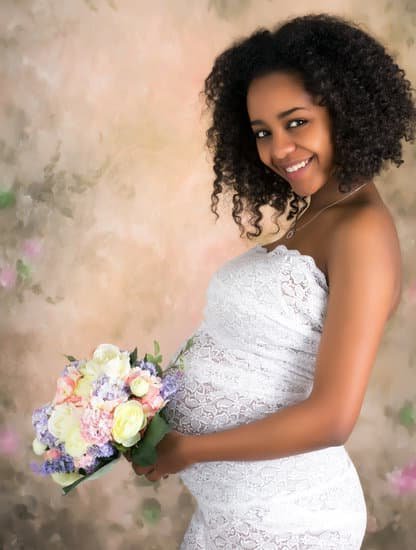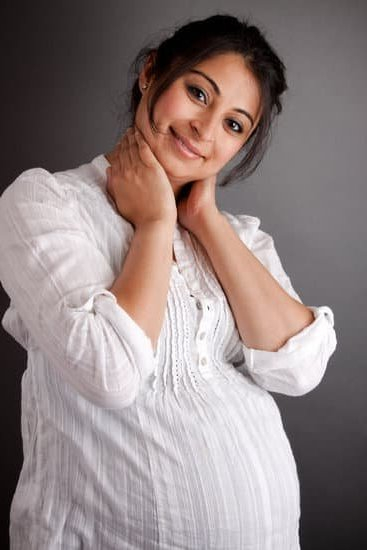Are you experiencing some changes in your body and wondering if they are signs of period vs pregnancy? It’s important to understand the key differences between these two significant events in a woman’s reproductive health. This article will delve into the various signs and symptoms associated with the menstrual cycle and early pregnancy, helping you distinguish between the two and providing insight into when to take a pregnancy test for accurate results.
The menstrual cycle is a natural process that every woman experiences, typically lasting around 28 days, although this can vary from person to person. Understanding the normal signs and symptoms of the menstrual cycle is crucial in differentiating them from potential early signs of pregnancy. From changes in basal body temperature to hormonal fluctuations, recognizing these indicators can help you gain insight into your reproductive health.
As your body prepares for menstruation, there are common signs that indicate an impending period. These include physical and emotional symptoms such as bloating, cramps, mood swings, and breast tenderness. It’s essential to recognize these signs in order to differentiate them from potential early pregnancy symptoms. By understanding the typical signs of period, you can better assess any unusual changes or new symptoms that may suggest a possible pregnancy.
Menstrual Cycle Basics
The menstrual cycle is a regular process that occurs in the bodies of women of reproductive age. It typically lasts about 28 days, although it can vary from woman to woman. During this cycle, the body goes through several hormonal and physical changes in preparation for a possible pregnancy. Understanding the normal signs and symptoms of the menstrual cycle is crucial in being able to differentiate between a period and early signs of pregnancy.
A typical menstrual cycle consists of several phases, including the follicular phase, ovulation, and the luteal phase. Each phase is regulated by different hormones such as estrogen and progesterone, which help to prepare the body for potential fertilization and implantation of an egg. Some common signs and symptoms experienced during the menstrual cycle include:
- Menstrual bleeding (period) lasting 3-7 days
- Abdominal or pelvic cramping
- Breast tenderness or swelling
- Mood swings or irritability
- Bloating or water retention
It’s important to note that these signs and symptoms can vary from person to person, and not all women will experience them in the same way. Additionally, while these are considered normal signs of the menstrual cycle, they can also overlap with early signs of pregnancy. This is why it’s essential to be aware of key differences between period symptoms and early pregnancy symptoms when trying to determine whether you may be pregnant.
Understanding these normal signs and symptoms can help women better recognize any changes or irregularities that may occur in their menstrual cycles, thereby enabling them to make informed decisions about their reproductive health. By being aware of what is typical for their bodies during their menstrual cycles, women can more easily identify any unusual symptoms that could indicate a potential pregnancy or a health issue that needs attention.
Signs of Period
What to Expect Before Your Period
Before the start of a woman’s menstrual cycle, she may experience a range of physical and emotional symptoms. These can include bloating, breast tenderness, mood swings, irritability, and food cravings. These symptoms are collectively known as premenstrual syndrome (PMS), and they typically occur in the days leading up to the start of a period.
Menstrual Cramps
One of the most common signs that a period is approaching is the onset of menstrual cramps. These cramps are caused by the uterus contracting to shed its lining, leading to discomfort and pain in the lower abdomen. Some women may also experience lower back pain along with menstrual cramping.
Changes in Discharge
As a period approaches, some women may notice changes in their vaginal discharge. It may become thicker, cloudier, or more abundant than usual. This is due to hormonal changes in the body as it prepares for menstruation.
When comparing these signs of period vs pregnancy symptoms, it’s important to note that while some early pregnancy symptoms such as breast tenderness and mood swings can resemble PMS, they may also differ in intensity or duration. It’s essential for women who are trying to conceive or are concerned about unplanned pregnancy to be aware of these distinctions so they can make informed decisions about their reproductive health.
Early Pregnancy Symptoms
During the early stages of pregnancy, many women experience a range of symptoms that can indicate a potential pregnancy. While these symptoms can vary from woman to woman, some common signs include nausea or morning sickness, fatigue, breast tenderness, and changes in appetite. It’s important to note that these symptoms can also be associated with other conditions or hormonal fluctuations, so it’s essential to consider them in conjunction with other signs.
Nausea and morning sickness are often one of the first signs of pregnancy that women notice. This can manifest as feelings of queasiness or actual vomiting, particularly in the morning but can occur at any time throughout the day. Hormonal changes in early pregnancy are thought to be the cause of this symptom.
Fatigue is another common early sign of pregnancy. Many women report feeling unusually tired or experiencing a lack of energy even before they miss their period. This can be attributed to increased levels of progesterone which is responsible for maintaining a healthy pregnancy.
Breast tenderness is also a hallmark symptom of early pregnancy. Women may notice that their breasts feel more tender or sore than usual and may also experience changes in size and shape. This is caused by hormonal changes as well as an increase in blood flow to the breasts.
It’s important to keep in mind that while these symptoms can indeed indicate early pregnancy, they can also be similar to premenstrual symptoms. It’s always best to speak with a healthcare professional if you have concerns about whether you might be pregnant or if you’re experiencing unusual symptoms.
| Early Pregnancy Symptom | Description |
|---|---|
| Nausea/Morning Sickness | Feelings of queasiness or vomiting, especially in the morning |
| Fatigue | Unexplained tiredness or lack of energy even before missing a period |
| Breast Tenderness | Increased sensitivity and soreness in the breasts due to hormonal changes |
Spotting vs Implantation Bleeding
Spotting before a period and implantation bleeding during early pregnancy are often confused because they can appear very similar. However, there are some key differences between the two that can help women distinguish between the two. It’s important for women to be aware of these differences in order to accurately understand what their body may be telling them.
Spotting before a period typically occurs in the days leading up to menstruation. It is often lighter in flow and can range in color from light pink to dark brown. On the other hand, implantation bleeding usually occurs around 10-14 days after conception and is much lighter than a regular period. It is also typically pink or brown in color, and may be accompanied by mild cramping.
To help distinguish between spotting before a period and implantation bleeding, here are some key differences:
- Timing: Spotting before a period occurs just before menstruation, while implantation bleeding happens a week or so after conception
- Flow: Spotting before a period tends to be slightly heavier than implantation bleeding
- Color: Implantation bleeding is generally lighter in color compared to spotting before a period
It’s important for women who are sexually active and experiencing spotting or abnormal bleeding to pay attention to other signs of pregnancy as well. Nausea, fatigue, breast tenderness, and frequent urination are all common early signs of pregnancy that should be considered alongside any unusual bleeding.
If there is uncertainty about whether the bleeding is due to a period or potential pregnancy, it may be helpful to consult with a healthcare professional for further guidance on taking a pregnancy test.
Changes in Basal Body Temperature
Basal Body Temperature During Menstrual Cycle
During a woman’s menstrual cycle, her basal body temperature (BBT) typically fluctuates based on hormonal changes. Before ovulation, the BBT is usually lower, and it rises after ovulation under the influence of progesterone. This rise in BBT can indicate that the fertile window has ended and that menstruation is imminent.
Basal Body Temperature in Early Pregnancy
In early pregnancy, BBT may remain elevated due to sustained high levels of progesterone to support the developing embryo. Therefore, if a woman has been tracking her BBT as part of fertility awareness or family planning and notices a sustained increase in temperature beyond her usual pattern, this could be a potential sign of pregnancy.
Distinguishing Between Period and Pregnancy Based on BBT
When considering the signs of period vs pregnancy, it’s important to understand that while an increase in BBT can be an indication of pregnancy, it is not exclusive to pregnancy. Therefore, using BBT alone as a definitive sign of pregnancy may not be accurate. It’s essential to consider other early symptoms and possibly take a pregnancy test for confirmation.
Ultimately, changes in basal body temperature can provide valuable insights into a woman’s menstrual cycle and potentially signal early pregnancy. However, it should be considered alongside other signs of period vs pregnancy for a comprehensive understanding of one’s reproductive health and possible conception.
Hormonal Changes
Hormones play a crucial role in both the menstrual cycle and early pregnancy. Understanding the hormonal changes that occur during these phases can help women differentiate between signs of period vs pregnancy. In a typical menstrual cycle, hormone levels fluctuate to regulate ovulation and prepare the uterus for a potential pregnancy.
These hormonal changes are also responsible for the physical and emotional symptoms experienced during PMS (premenstrual syndrome). On the other hand, early pregnancy is marked by a surge in hormones to support the development of the fetus.
During the menstrual cycle, estrogen and progesterone levels rise and fall in a pattern that prepares the body for potential fertilization of an egg. If fertilization does not occur, hormone levels drop, leading to menstruation. Common symptoms of hormonal fluctuations during this time include mood swings, breast tenderness, bloating, and fatigue.
Conversely, in early pregnancy, hormonal changes are focused on supporting the implanted embryo. The hormones human chorionic gonadotropin (hCG), estrogen, and progesterone increase significantly during early pregnancy, leading to symptoms such as nausea, breast tenderness, fatigue, and frequent urination.
Understanding how hormonal fluctuations contribute to both the menstrual cycle and early pregnancy can help women recognize subtle differences in their symptoms. Keeping track of these changes through journaling or using period tracker apps can provide valuable insights into one’s body and assist in determining whether certain signs point towards an impending period or potential pregnancy.
| Hormonal Changes | Signs of Period vs Pregnancy |
|---|---|
| Menstrual Cycle Hormonal Fluctuations | Estrogen and progesterone rise and fall cyclically |
| Early Pregnancy Hormonal Changes | Surge in hCG, estrogen, and progesterone levels |
| PMS Symptoms | Mood swings, breast tenderness, bloating |
Takeaway
In conclusion, understanding the difference between the signs of period and early signs of pregnancy is crucial for women who are trying to conceive or simply want to be aware of their body’s changes. While both can share similar symptoms such as fatigue and breast tenderness, there are clear distinctions that can help distinguish between the two.
It is important to note that every woman’s body is different, so not all symptoms may apply to each individual. However, being aware of these key differences can help women make informed decisions about their reproductive health.
One significant way to differentiate between the signs of period vs pregnancy is by paying attention to spotting versus implantation bleeding. Spotting before a period tends to be lighter and may occur closer to the start of menstruation, while implantation bleeding occurs when a fertilized egg attaches itself to the uterine wall and generally appears as light pink or brown discharge.
Additionally, changes in basal body temperature can also provide insight into whether a woman may be experiencing premenstrual hormonal fluctuations or if she could potentially be pregnant. Understanding these distinctions can alleviate some of the uncertainty that often accompanies early pregnancy symptoms.
For those who suspect they may be pregnant but are unsure, taking a pregnancy test is crucial for accurate results. Most tests can accurately detect pregnancy around the time of a missed period, but some tests are designed to detect HCG (the hormone produced during pregnancy) earlier than others.
It is important for women to follow the instructions on the test carefully in order to ensure accurate results. By being knowledgeable about the possible signs of both period and pregnancy, individuals can take proactive steps toward their reproductive health and seek appropriate medical guidance when necessary.
Frequently Asked Questions
Can Early Pregnancy Feel Like a Period?
Yes, early pregnancy can feel like a period for some women. This can include symptoms such as light bleeding or spotting, cramping, and breast tenderness that mimic the symptoms of a menstrual period.
What Are the Signs That Your Period Is Not Coming?
The signs that your period is not coming can include missed periods, changes in menstrual patterns, hormonal imbalances, stress, weight fluctuations, or underlying health conditions affecting the reproductive system. It’s important to consult a doctor if you experience these signs.
What Is the Difference Between Period Cramps and Early Pregnancy Cramps?
Period cramps and early pregnancy cramps can feel similar due to the uterus contracting. However, early pregnancy cramps may be milder and less intense than period cramps for some women. Additionally, early pregnancy cramps may be accompanied by other symptoms such as nausea or breast tenderness.

Welcome to my fertility blog. This is a space where I will be sharing my experiences as I navigate through the world of fertility treatments, as well as provide information and resources about fertility and pregnancy.





